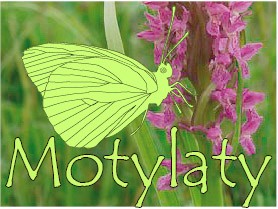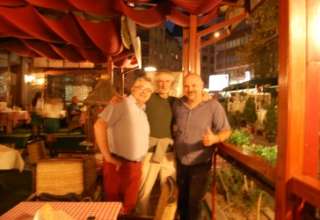
The strategic aim of the project is the population sustainability of butterflies and the protection of their habitat by Habitat Directive on the area of Southwest Poland. We focus our attentions on the rare butterflies that include: the marsh fritillary (Euphydryas aurinia), the violet copper (Lycaena helle), the large copper (Lycaena dispar), the scarce large blue (Maculinea teleius), and the dusky large blue (Maculinea nausithous).
Main goals of the project:
Restoration of grassland habitats with a period of active and extensive management in order to ensure the sustainability of funding for the grasslands
Cooperation with scientists along with the monitoring of protective measures and the effects of such measures
Education to the project beneficiaries – farmers, NGOs and local municipalities
Support measures for farmers through specialized equipment adapted to high cutting (15 cm) in order to ensure their ability to work under conditions of wet fields
The most important effect of the project is to stabilize and create conditions for constant population growth of rare butterflies, and to encourage farmers to work towards the protection of nature with incentives for agri-environmental programs in the area. Through education we will demonstrate that Natura 2000 doesn’t have reason to be afraid.
Within the project we anticipate the inclusion of 950 hectares of habitat into the selected Natura 2000 areas in Lower Silesia and Opole.
“Meadow Mountains and the Izerskie” PLH020102
“Mountains and Kaczawskie” PLH020037
“Massif” with the “Meadow Sulistrowice ” PLH020040
“refuge over the Bóbr” PLH020054
“Trzcińskie Wetlands” PLH020105
“Lower Silesian Forests” PLB020005
“Mountains” PLH020006
“Meadows near Kluczbork on Stobrawa” PLH160013
“Valley Stream nica and Boguszyckiego” PLH020091
“Bierutów” PLH020065
In addition:
Bóbr Valley Landscape Park
Rudawski Landscape Park
Przemkowski Landscape Park
Land adjacent to the “Mountains”, “Forest Grędzińskie”, “Mountains and Kaczawskie” and to Rudawski Landscape Park
The completion of the project should result in the following:
The purchase of efficient specialized equipment for work on difficult, specifically wet fields.
Selective removal of natural succession on fields – selective grubbing and mowing.
Initialized mowing and crop harvesting.
The mowing of invasive vegetation.
Educational support project.
The preparation of agri-environmental plans along with beneficiaries.
Communication and discussion of project results.
Revitalization of valuable natural meadows in Lower Silesia
Goal of the project:
The goal of the project was the protection of valuable biodiversity in terms of natural habitat in rural areas within Natura 2000 network in Lower Silesia. An interruption in agricultural practices in these terrains as a result of natural succession means a loss in the characteristics of a meadow. The project included the protection of two types of meadows (Molinia meadows and psiary bliznickowe) and related species in 5 areas: the Barycz Valley, the Valley of the Oder River, the Valley of Good and Widawa, Ore Mountains Janowickie and Stone. Meadow communities in these areas generally lose character due to afforestation, leveling for investment, and lack of breeding animals. These areas deserve special protection due to their exceptional natural value.
Calendar:
Spring 2007:
Environmental monitoring of selected species of plants and animals
Work related to the elimination of invasive species (trees, shrubs, cane, reed, goldenrod, etc)
Spring 2008:
The establishment of project information boards concerning revitalization and conservation of biodiversity in all designated areas.
Repeated monitoring of selected species of flora and fauna within key areas in the Natura 2000 network.
Assessment of revitalization work.
Fall 2008:
Summary and completion of projet.
Partnerships:
In collaboration with the Lower Silesian Foundation for Sustainable Development plans for verification of selected agricultural systems on approximately 100 hectares associated with two types of habitats within the Natura 2000 sites. Verification of these terrains was based on studies of the environments as well as contacts with scientists (from the governmental version of Natura 2000 as well as “shadow list”) for the evaluation in the terrain along with the establishment of property rights (Agricultural Property Agency Offices of Commons) for these terrains. The materials were collected for the documentation of habitat and ornithology.
Local farmers were recruited for field work using mechanical equipment. Collaborations with labor offices, social associations (including the Wroclaw association “People for People”), and corps scout were also established. In total, the project took part in four non-governmental organizations and 6 agricultural producers.
In the final phase of the project, local schools and the Soleckie Council participated in the placement of information boards and the summation of the project.
Results:
The restoration of 100 hectares of valuable meadow and pastures which are endangered by the loss of environmental values.
The preparation of 10 agri-environmental plans for cooperation between our environmental organizations and farmers.
The installation of 10 informational boards about the value of nature as well as the structure of the project to restore meadows and pastures and the commencement of the protection of the biodiversity in these habitats.
The distribution and circulation of 1000 informational brochures.
The creation of the project’s website.
Thanks to the completion of the “Green Kosynierzy” an applicant has the chance to expand their knowledge and material resources for the protection of biodiversity and the future of endangered forests and open
The expected outcome is to improve the access to the Rural Development Program (RDP) and the agri-environmental programs within the new programming period (2007-2013) for beneficiaries and others who want to benefit from our experiences.
The program coordinates 20 meetings between municipal and Solecki representatives as well as between youth and teachers from schools that lie in the vicinity of the revitalized areas, in order to contribute to the integration of the local community.
It is not without significance that one of the methods, like NGOs that are often unjustly associated with protests “blocking “development,” can help eliminate the deficit between the possibilities to protect biodiversity within the realm of RDP and the abilities of beneficiaries.
The project is financed in full by the Regional Fund for Environmental Protection and Water Management and the Small Grants Program of the Global Environment.
Within the realm of the education campaign, “The whole truth about waste,” a series of training courses for teachers and model lessons for students and trainers was established. As part of these activities, it creates an educational package consisting of 5 notebooks (“Paper,” “Plastic,” “Glass,” “Metals,” and “Batteries”) containing lesson plans for direct use by teachers.
In 2006, as a part of the project, “The whole truth about waste,” we introduced 2 training courses for teachers and three model lessons in Lower Silesia.
The training courses were conducted the 18th and the 20th of December of 2006 in the Tumski Hotel in Wroclaw. The model lessons were conducted in the Zespole Schools (November 30, 2006), Special Educational Center no. 10 (November 29, 2006), and the University of Wroclaw (December 15, 2006).
In the year 2007 the training took teachers from three provinces:
Lubuskie
Greater Poland
Opole
In the Lubuskie province the schooling took place on March 3rd 28th 2007 in the Hotel Orbis in Zielona Gora.
In the Greater Poland province schooling took place on the April 16th and 17th 2007 in the Hotel Rzymsk in Poznan
In the Opole province schooling took place April 24th and 25th 2007 in the Hotel Piast in Opole.
The black list of municipalities that do not have in place regulations for cleanliness and order that are adapted to the current regulations developed by FWIE
Consistent with earlier announcements on this site we fit in a list of municipalities who, despite the passing of 1.5 years from the statutory deadline, still do not have adapted regulations for cleanliness and order. The Act of July 29th 2005 concerning the amending of laws on waste as wells as the amending of certain other laws, committed the council of municipalities to to adopt rules of cleanliness and order in the community within three months of its entry. Currently, there are 442 municipalities on the list from 11 different provinces (approx. 25% of municipalities from these provinces). We are developing a list from the provinces of Silesia, Zachodniopomorskie and Malopolskie (they should appear within the next 10 days) and we are waiting for the data from the province of Warmia-Mazary and Podlasie. Municipalities, which do not comply with the enacted regulations, are encouraged to make use of the standard text, which can be found on the National Chamber of Waste Management’s site.
Anna Swiatek, project coordinator
Piotr Rymarowicz, FWIE director




